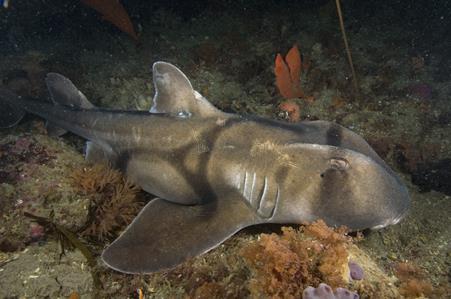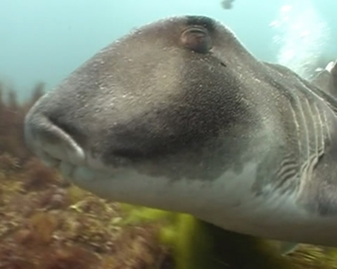Other Names
- Bullhead
- Bullhead Shark
- Dogshark
- Horn Shark
- Oyster Crusher
- Oyster-crusher
- Pigfish
- Tabbigaw
General Description
Head large, rounded head with a raised crest over the eye, two triangular dorsal fins, each with a spine; anal fin present. Body greyish to brownish with dark harness-like markings on the body. To 1.7 m, usually less than 1 m.
Biology
The Port Jackson Shark has small sharp teeth in the front of the jaws and molars at the rear, used for crushing prey of molluscs, crustaceans and echinoderms. They often aggregate in gutters and caves during the winter breeding season. Females lay leathery spiral egg cases and wedge them into crevices on rocky reefs. The young hatch after about a year. Although not dangerous, these sharks should be handled carefully due to the venomous dorsal-fin spines.
Habitat
Rocky reefs and adjacent sandy and seagrass areas, to depth of 275 m.
Reefs
Soft substrates
Distribution guide
New Zealand and southern Australia.
Species Group
Depth
Shallow (1-30 m)
Deep ( > 30 m)
Water Column
Max Size
1.7 m
Diet
Carnivore
Harmful
Although not usually considered dangerous to humans, has the potential to bite. Dorsal fin spines are venomous.
Commercial Species
No
Global Dispersal
Recorded in Australia
Conservation Status
- DSE Advisory List : Not listed
- EPBC Act 1999 : Not listed
- IUCN Red List : Least Concern








